Trees of Light
A veritable forest of illumination hides in plain sight throughout the center of the Uptown Campus.
By Donna Liquori ’88
Columns resembling palm trees, the fronds aglow, loom over a nervous couple played by Jane Fonda and Kris Kristofferson, looking to secure a loan from Arab investors in Saudi Arabia. They wait as men in Middle Eastern clothing kneel on a carpet for the call to prayer.
But there’s something strangely familiar about this foreign setting in the high-stakes 1981 movie “Rollover.”
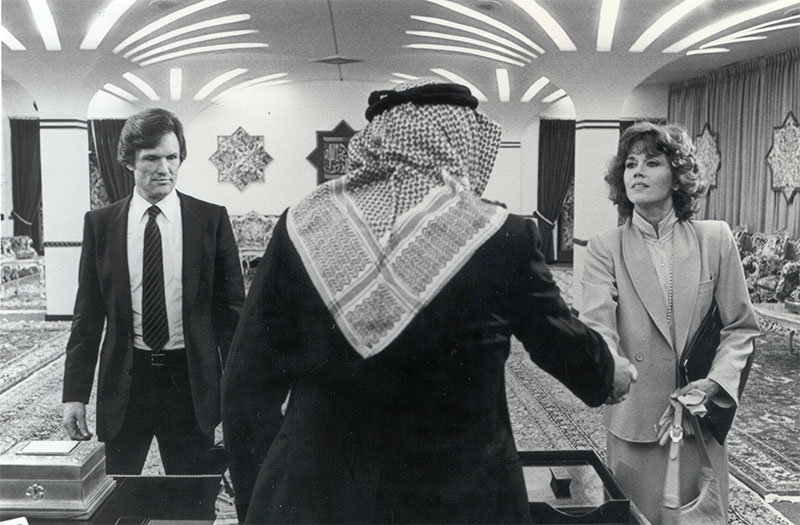
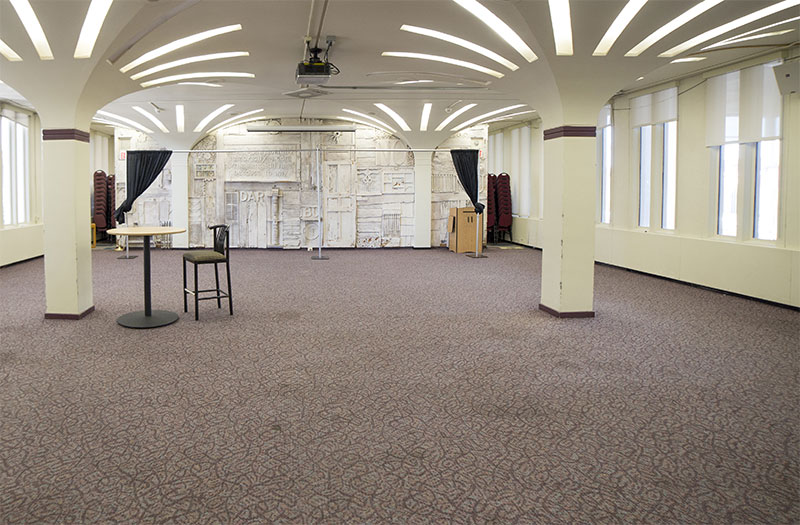
Turns out, it’s not foreign at all. The actors were in the University at Albany’s Campus Center Assembly Hall; the room, normally filled with student activities, was stripped down and “dressed” with ornate chairs, carpets, pillows and wall hangings. The distinctive “palm lights,” as they are affectionately known around campus, provided just the right detail to transform a space within a Northeast American university into an Arab nation boardroom. “I do recall being so proud of finding the University at Albany, as it was really a perfect match to Saudi Arabia,” said Celia Costas, the location coordinator on “Rollover.” Her set designer and director, both legendary, were pretty happy, too. “Oh my God, they were thrilled to death. George Jenkins and Alan Pakula don’t thrill easy,” Costas, now an executive producer, said in a phone interview. She’s since worked on “Sophie’s Choice,” “A Quiet Place” and “The Undoing.”
Costas can’t remember exactly how they found UAlbany, but said Jenkins was a huge fan of Edward Durell Stone, the campus architect, which may have had something to do with it. Stone’s lighting fixtures have recently received a long-overdue LED upgrade.
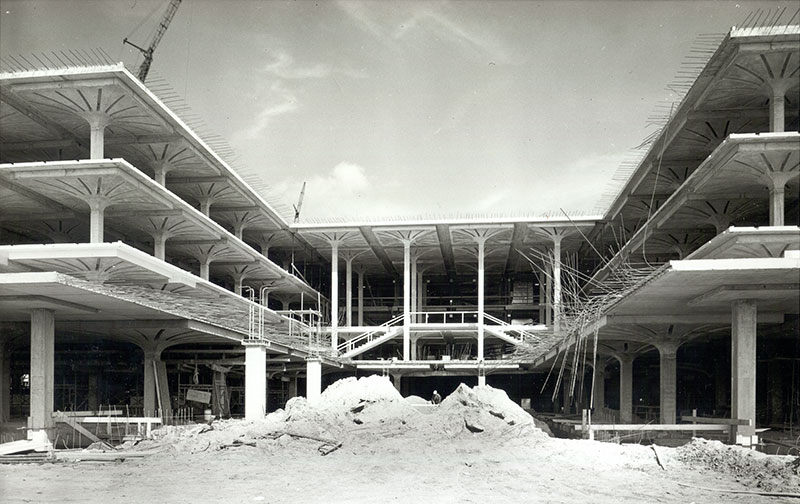
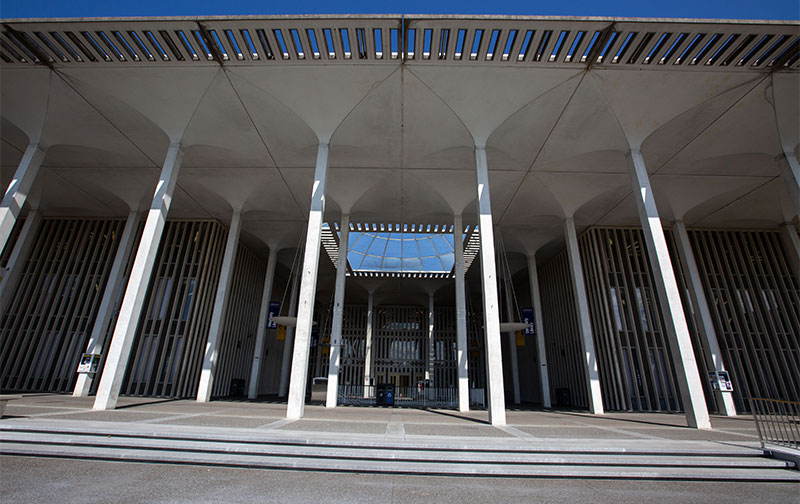
The “palm tree” reference may have started in the 1960s when news accounts referred to “endless rows of ‘palmetto’ arches rising on slender columns,” according to the University’s 2009 Campus Heritage Plan.
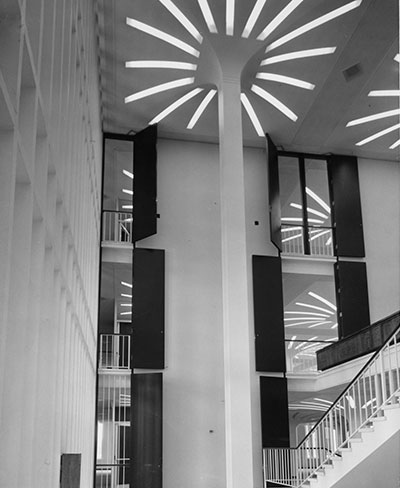
“They are an interesting architectural feature,” said Mark Hahn, the University’s project manager for the lighting upgrade, adding they are very hard to maintain. “They’re unique. I’ve never seen them anywhere else.”
There are 656 of these palm tree lights throughout the campus, but this project retrofitted and replaced 260 of them in the Performing Arts Center, the Campus Center and the Physical Education building, which means 3,536 fronds. And it wasn’t easy.
According to Hahn, a previous retrofit in the late ’90s or early 2000s replaced the original magnetic ballasts and T10 high output fluorescent tubes with electronic ballast and new T8 fluorescent tubes. The current retrofit replaced those T8 tubes with LED fixtures and new redesigned lens covers.
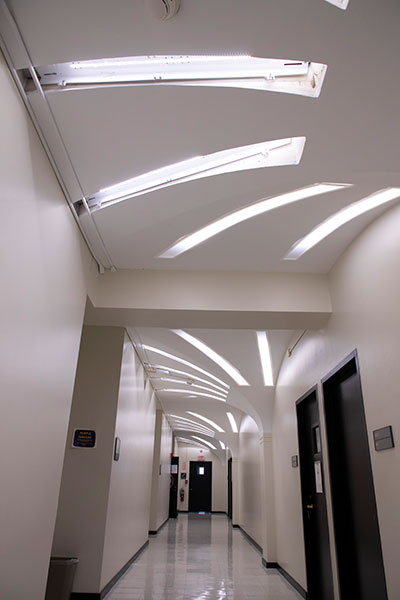
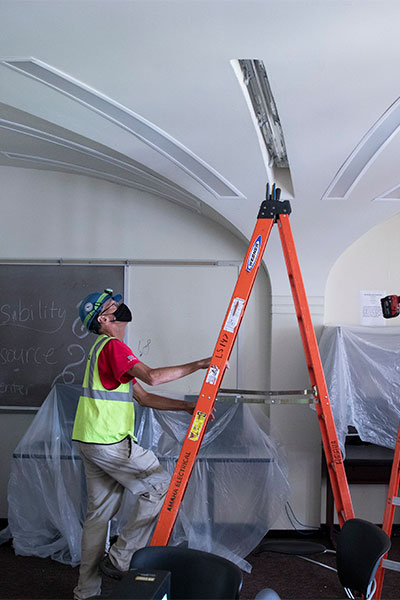
Hahn said the main purpose of the retrofit is energy and cost savings, and the new lights will also accommodate the spaces with appropriate brightness and warmth.
Hicks Stone, the son of Edward Durell Stone, has been dismissive over the years of comparisons of UAlbany to architecture done in the Middle East, saying his father was more inspired by Frank Lloyd Wright after visiting him in Wisconsin.
“When he did that, he said it was the first time he had seen one of Mr. Wright’s buildings and he was overwhelmed by its beauty. And you can see elements of Wrightian design either overtly or subtly in all of father’s work from 1940 until his death, or more accurately his retirement from practice in 1974. And those columns that form the basis for the entire Albany campus are actually reinterpretations of the flared columns that Frank Lloyd Wright used in his S.C. Johnson & Son headquarters in Racine, Wisconsin.”
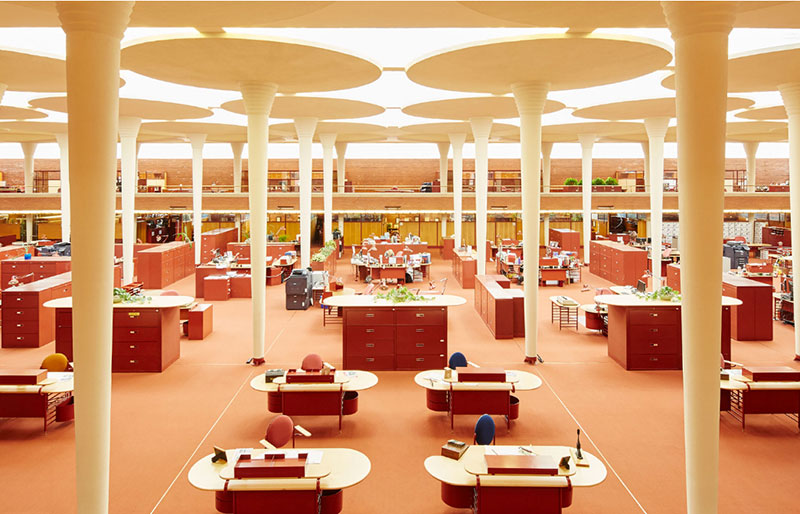
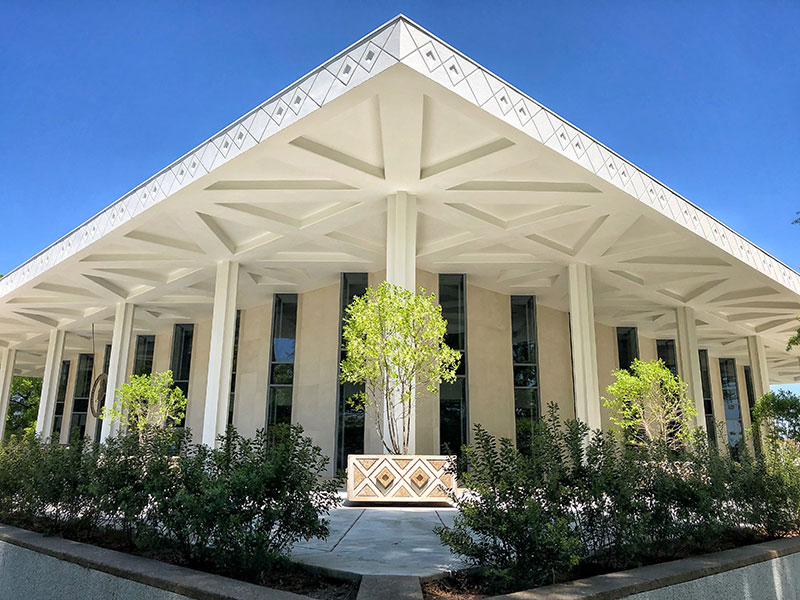
As for the interior palm trees, Stone is uncertain where that concept originated.
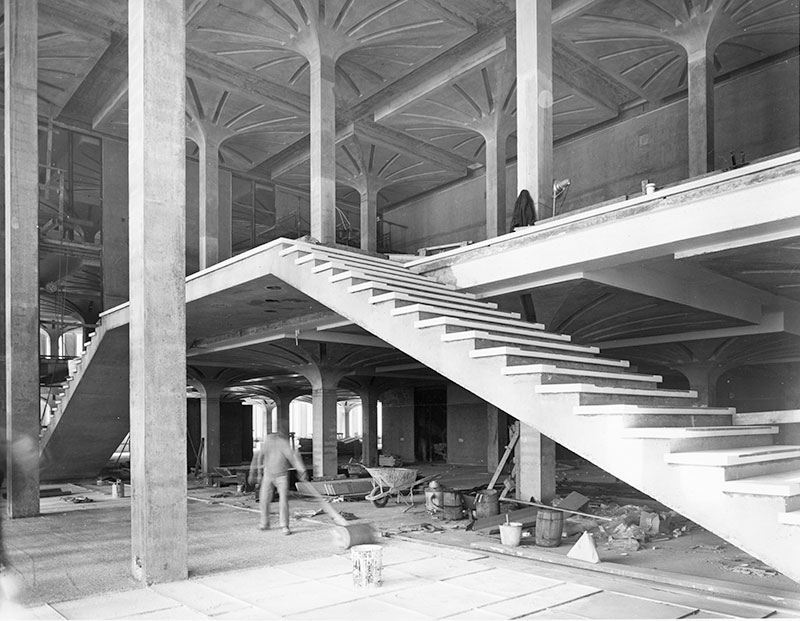
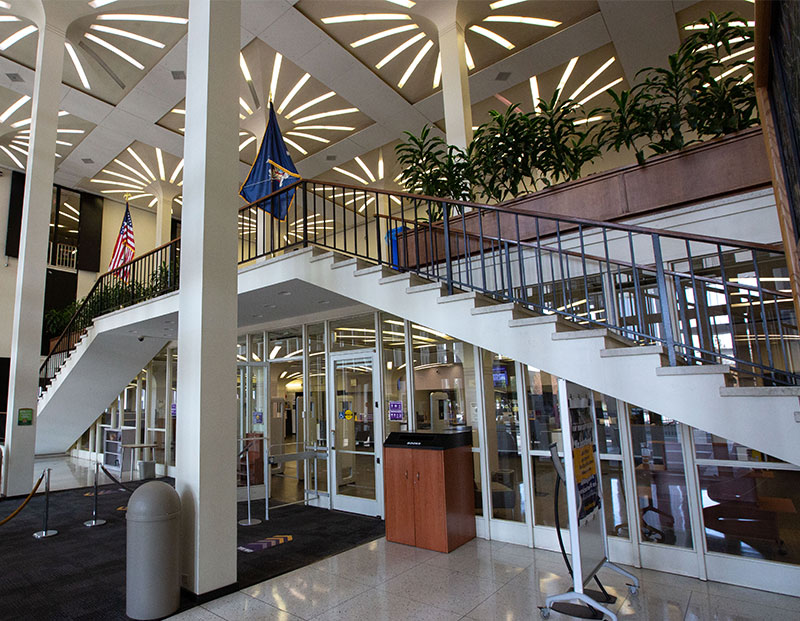
“There were a variety of geometric motifs that dad pursued in his career and I suspect one of the designers on the project at the time probably came up with the idea. Would dad have said, ‘Let’s make it reminiscent of palm fronds?’ He may have,” Stone said. “He’d done really overtly anthropomorphic details for two projects in California and its possible that something like that, some biomorphic form, slipped into Albany. It may very well be. I couldn’t say one way or another. I’d think you’d have to have been there at the moment of genesis to understand what the thought was.”
Read This Next
Glowing Up
Keamone Frederick ’15 is a budding entrepreneurial queen with a Midas touch.
Fashioning Change
A passionate advocate for size-inclusivity, Gianluca Russo ’19 promotes the power of plus.


